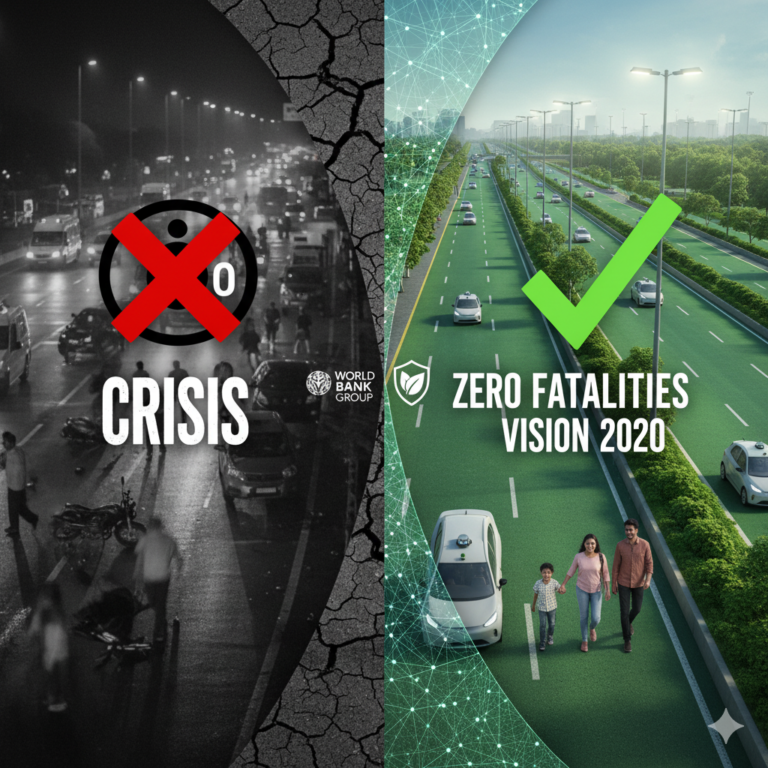Gist:
- Rising temperatures due to climate change are increasing heat stress, especially for outdoor workers.
- Heat shelters are low-cost, community-based solutions aimed at protecting vulnerable populations.
- These shelters provide shade, water, and rest, offering critical support to construction workers, street vendors, and daily wage laborers.
- Governments and NGOs across India are experimenting with these shelters as part of heat action plans.
- Designing shelters with local climate and culture in mind ensures effectiveness and adoption.
- They represent an intersection of urban planning, climate adaptation, and social equity.
- India needs a scalable policy framework to institutionalize heat shelters as essential urban infrastructure.
Introduction
India is boiling. From Delhi’s asphalt-melting summer to Ahmedabad’s blazing sidewalks, the nation’s outdoor workers face a daily battle against rising temperatures. For the country’s millions of street vendors, construction laborers, sanitation workers, and rickshaw drivers, shade is not a luxury—it’s a lifeline. As climate change intensifies and urban heat islands expand, an innovative solution is emerging: the “heat shelter.”
These roadside sanctuaries, designed specifically for people who work under the open sky, are starting to pop up in some of India’s most heat-stressed cities. More than architectural structures, they are symbols of dignity, climate resilience, and the right to safe working conditions.
Understanding the Heat Crisis in India
1. Heat Stress: A Silent Public Health Emergency
- In 2023 alone, India recorded over 280 heatwave days across multiple states.
- According to the India Meteorological Department (IMD), heatwaves now occur earlier, last longer, and reach unprecedented temperatures.
- The Intergovernmental Panel on Climate Change (IPCC) warns that South Asia is a global hotspot for extreme heat, which could make large parts of India unlivable by 2100.
2. Outdoor Workers at the Frontlines

- Roughly 90% of India’s workforce is in the informal sector.
- These workers often lack access to air conditioning, adequate hydration, or medical facilities.
- Prolonged exposure to temperatures over 40°C can lead to heat exhaustion, heatstroke, kidney damage, and even death.
What Is a Heat Shelter?
1. Concept and Purpose
- Heat shelters are shaded, semi-open spaces constructed in public areas where outdoor workers can rest and cool down.
- They typically include benches, drinking water stations, ventilation, and sometimes even fans or mist sprayers.
- Materials used are often locally sourced and include bamboo, thatch, cloth, and heat-reflective paint.
2. Key Design Principles
- Thermal Comfort: Designed to reduce ambient temperature using passive cooling.
- Accessibility: Located in high-footfall urban areas like markets, traffic junctions, and construction sites.
- Sustainability: Built using recyclable materials; often solar-powered.
- Inclusivity: Designed for people of all ages, genders, and abilities.
Case Studies: Heat Shelters in Action
1. Ahmedabad: A Pioneer City
- Ahmedabad launched South Asia’s first Heat Action Plan (HAP) in 2013.
- With support from the Natural Resources Defense Council (NRDC), the city installed heat shelters at bus stops and markets.
- Studies show a 30% reduction in heat-related illnesses in areas covered by the plan.
2. Delhi’s “Cool Roofs” and Shade Zones
- Delhi is experimenting with shaded bus stops and solar-reflective roofing in slums.
- NGOs like SEEDS and UrbanClap have collaborated on installing temporary summer shelters.
3. Odisha and Telangana: Rural Innovations
- Rural heat shelters in Odisha are built with mud and cow dung, using indigenous knowledge systems.
- Telangana is piloting cooling corridors lined with trees and resting huts along highways.
Social and Economic Impact
1. Reduced Heat-Related Morbidity
- Workers using shelters report fewer cases of dehydration, dizziness, and fatigue.
- Preventing heatstroke reduces hospital admissions and public health costs.
2. Productivity Gains
- Regular breaks in shaded areas improve labor efficiency and reduce absenteeism.
3. Social Equity and Dignity
- Recognizing the plight of informal workers enhances civic participation and social justice.
Challenges and Limitations
1. Lack of Awareness and Data
- Many workers are unaware of heat shelters or don’t trust their safety.
- Governments lack granular data on heat-stress fatalities and worker health.
2. Maintenance and Vandalism
- Shelters often fall into disrepair due to poor maintenance and misuse.
3. Urban Planning Gaps
- Heat shelters are often installed as afterthoughts rather than integrated into urban design.
Policy Recommendations
1. Integrate Heat Shelters into Smart City Plans
- Mandate heat shelters in urban development bylaws.
2. National Heat Safety Code for Workplaces
- Develop legislation to regulate working conditions during high heat.
3. Heat-Sensitive Urban Planning
- Encourage tree cover, reflective surfaces, and green corridors.
4. Community Involvement
- Involve local artisans, NGOs, and workers in design and upkeep.
The Road Ahead: Building Climate-Resilient Cities
India at a Crossroads
India stands at a climatic crossroads. The choices made today—from city layouts to labor laws—will determine how well the country adapts to an overheating planet.
Heat Shelters as Symbols of Climate Justice
In a nation where 500 million people toil under open skies, heat shelters are more than architectural interventions; they are expressions of empathy, urgency, and resilience. They are what climate adaptation looks like from the ground up.
Conclusion
The climate crisis isn’t a distant future for India’s outdoor workers. It is the 2 p.m. sun burning the skin, the lack of shade on a blistering day, the water that ran out by lunchtime. Heat shelters offer a chance to rewrite this narrative—one shaded bench, one drink of water, one breath of cooler air at a time.
For India to truly prepare for a hotter future, heat shelters must move from being innovative pilot projects to essential public infrastructure. Because when it comes to climate resilience, every degree matters—and every life counts.









+ There are no comments
Add yours